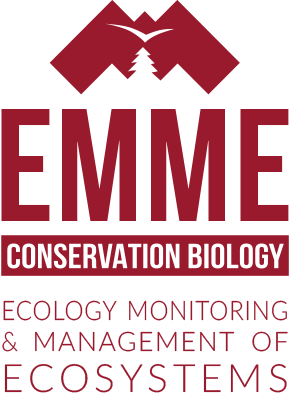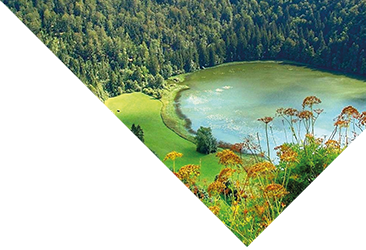

List of M2 Internship subjects 2021-2022:
- Comparison of the hatching success of Northern lapwing (Vanellus vanellus) in two regions of France: Hauts-de-France and Alsace. FaunaStats, Schiltigheim, France.
- Assessing the density and distribution of the snail community in Ebony Forest Reserve and how these are affected by habitat characteristics and exotic predators. Ebony Forest Nature Reserve, Chamarel, Mauritius.
- Vocal usage in relation to spatial use and infanticide risks by mother chimpanzees. University of Neuchâtel, Neuchâtel, Switzerland.
- DNA barcoding of Swiss Mammals: building a new voucher-based database, highlighting barcoding pitfalls. UMR 6249 CNRS – Chrono-Environnement Laboratory, Besançon, France.
- Invasive alien fauna management in protected areas in Occitanie, France. Conservatoire d’Espaces Naturels d’Occitanie (CEN Occitanie), Toulouse, France.
- Assessing the effects of organic matter content on the toxicity of pesticides to soil invertebrates. Vrije University, Amsterdam, Netherlands.
- Effects of exotic plants and forest restoration on the avian community at Ebony Forest, Mauritius. Ebony Forest Nature Reserve, Chamarel, Mauritius.
- Plant host impact on life history traits of the ambrosia beetle Xyleborus germanus (Curculionidae: Scolytinae). University of Freiburg, Stegen-Wittental, Germany.
- Predicting habitat suitability for a critically endangered population : case study of the Yellow-bellied Toad, Bombina variegata, in a reinforcement context. CERFE – Université de Reims Champagne-Ardenne (URCA), Boult-Aux-Bois, France.
- Searching for Greater Mouse-eared Bats (Myotis myotis) nurseries and studying their hunting habitats in the Rambouillet forest. Parc Naturel Régional de la Haute Vallée de Chevreuse, Chevreuse, France.
- Towards inclusive conservation: linking ecology and ethnobotany. University of Guelph, Guelph, Canada.
List of M2 Internship subjects 2020-2021:
- Origin of carbon consumed by pelagic consumers in a context of eutrophication: a paleolimnological approach. UMR 6249 CNRS – Chrono-Environnement Laboratory, Besançon, France.
- Study of contamination pathways in Jura karstic aquifers: application to the watershed of the Arcier source (25). UMR 6249 CNRS – Chrono-Environnement Laboratory, Besançon, France.
- Home range and movements of the common bottlenose dolphins (Tursiops truncatus) in the Northeastern Adriatic Sea. Blue World Institute of Marine Research and Conservation, Veli Lošinj, Croatia.
- The roding habitat of the Eurasian woodcock in Auvergne-Rhône-Alpes: validation of a predictive model and identification of explanatory variables. Fédération Régionale des Chasseurs d’Auvergne-Rhône-Alpes (FRC AuRA), Andrézieux-Bouthéon, France.
- Reaction of green western lizard populations (Lacerta bilineata) to anthropogenic disturbances on their breeding grounds. Conservatoire d’Espaces Naturels de Franche-Comté (CEN FC), France.
- Moose presence related to high risk areas in the landscape of risk. Inland Norway University of Applied Sciences, Elverum, Norway.
- Research of correlations between soil characteristics and adsorption parameters of pesticides for understanding the emergence of resistance in Aspergillus fumigatus. UMR 6249 CNRS – Chrono-Environnement Laboratory, Besançon, France.
- Agro-environmental risk assessment by four bioindicators: Earthworms, Carabids, Spiders, Weeds. NIAB (National Institute of Agricultural Botany) TAG, Wymondham, UK.
- The use of the rock crushing in the Jura mountains: inventory and challenges. UMR 6249 CNRS – Chrono-Environment Laboratory, Besançon, France.
- Identification of favourable habitats for the Ocellated Lizard (Timon lepidus) at the Cadarache Center and modeling of the spatial distribution at the scale of the site. CEA Cadarache, Saint-Paul-Les-Durance, France.
- Study of the spatial behaviour of the European mink (Mustela lutreola) and approach of collision risk in Charente, France. Groupe de Recherche et d’Etude pour la Gestion de l’Environnement (GREGE), Villandraut, France.
- Conservation of Eurasian Curlew (Numenius arquata) , breeding success and distribution in the Lough Allen region, Co Letrim. National Parks & Wildlife Service, Republic of Ireland.
- Implementation of the first year of monitoring Great Crested Newt, Triturus cristatus (Laurenti, 1768), as part of the GrandEst Observatory of biodiversity. Conservatory of Natural Spaces of Lorraine (CEN Lorraine), Bainville-aux-Miroirs, France.
- Ecological compensation and MAEc in the context of a development project targeting the Northern Harrier and the Eurasian Stone-Curlew: Feedback and analyses. Systra.
- Investigating the role of aviation light in wind turbines indirect effects on bats. Auddice Biodiversité, Roost-Warendin, France.
- Spatial ecology and terrestrial habitat selection in the Green toad (Bufotes viridis): telemetric monitoring in the post-nuptial period. CEREMA, Direction Territoriale Est, Metz, France.
- Decrease of European hare densities within grassland-dominated areas: (i) feasibility study of a population reinforcement, (ii) method development/calibration and first survival analyses. Faune INNOV, Besançon, France.
List of M2 Internship subjects 2019-2020:
- Analysis of the network of Sensitive Natural Areas in the Bouches-du-Rhône and prioritization of flora conservation issues. Mediterranean National Botanical Conservatory (CBN) of Porquerolles, Hyères, France.
- Characterisation of the habitats of the Great Gray Shrike ( Lanius excubitor ) breeding population in Franche-Comté. LPO Franche-Comte, Besancon, France.
- Influence of methodological and physiological parameters on the in vitro bioaccessibility of mercury from seafood. University of Montreal, Montreal, Canada.
- Management plan for invasive alien plant species of the Regional Nature Reserves of the Grenoble Metropolis. Grenoble-Alpes Metropolis, France.
- Effects of mixtures of pesticides on non-target wildlife: can soils from crops under conventional farming induce toxic responses in snails? UMR 6249 CNRS – Chrono-Environment Laboratory, Besançon, France.
- Use of DNA metabarcoding for benthic diatoms: interest for the environmental assessment of the littoral zone in large alpine lakes. UMR CARRTEL, France.
- Quantitative biogeographic analysis of the fern flora of the Province of Malaga (Spain) for its conservation against the climate crisis. Galapagos Conservancy, Ecuador.
- Remote sensing approaches as a tool for urban bird conservation. University of Salford, Salford, UK.
- Paleoclimatic reconstruction by multi-model ensemble approach applied on two boreal lakes of eastern Canada. University of Montreal, Montreal, Canada.
- Predicting the sensitivity of Daphnid communities to chemical stress with a Dynamic Energy Budget Individual-Based Model: The role of crowding-related interactions. Ghent University, Ghent, Belgium.
- Development and implementation of protocols for the study of the distribution of two cryptic species in Côte-d’Or, the shrews Crocidura leucodon and Sorex araneus . LPO Côte d’Or and Saone-et-Loire, Talant, France.
- Nutritional quality of food resources of wood mouse ( Apodemus sylvaticus ) in a polluted context. UMR 6249 CNRS – Chrono-Environment Laboratory, Besançon, France.
- Episy Marshes Management Evaluation – Feedback of 10 years management. Biotope, France.
- Update of ornithological data on the Natura 2000 site of Piedmont Vosges. CD Eau Environnement, Maizieres, France.
- Adaptation of enchytraeid Enchytraeus albidus to copper contaminations in soils. INRAE, Versailles, France.
- Analysis of the functionality of the ecological corridors of the Community of Municipalities of the Valleys of Thônes. Community of Communes of the Valleys of Thônes (CCVT), Thones, France.
List of M2 Internship subjects 2018-2019:
- Towards an adapted management of design projects of soft paths. Taking the impacts on the environment into account and proposing measures according to ERC (“avoid-reduce-compensate”) approach. Study case of the “vélo-route” (bicycle lane) “ViaRhône” between Pierre-Bénite and Givors (69). VERDI Mediterranean Engineering, Aix-en-Provence.
- Are metals in slags from ancient smelting activities trophically bioavailable to the land snail Cantareus aspersus ? UMR 6249 CNRS – Chrono-Environment Laboratory, Besançon.
- Thermochemical treatment of olive press residues – Agronomic and Environmental assessment. RITTMO Agroenvironment, Colmar.
- Study of the effect of law environmental doses of Chlordecone on DNA methylation and miRNAs expression in Hydra circumcincta . University of Aix-Marseille – IMBE, Marseille.
- Structural and functional landscape connectivity: road stormwater basins as habitats for amphibians. General Council of the Bas-Rhin department, Strasbourg.
- Influence of landscape features on exposure profile to pollutants in the tawny owl. UMR 6249 CNRS – Chrono-Environment Laboratory, Besançon.
- Integration of EIT (Industrial and Territorial Ecology) approach as part of extension of activity area. Comparative analysis of EIT approach in relation to the classic ERC (Avoid-reduce-compensate) on two sites of agglomeration community of “Annonay Rhône Agglo”. NOX agency, Bron.
- Spatial knowledge of Alpine ibex and stillness areas related to the summer attendance of the National Nature Reserve of Contamines-Montjoie. Asters – Conservatory of Natural areas in Haute-Savoie, Sallanches.
- Modeling of the impact of wind turbines on Red kite breeding dynamics in Franche-Comté. LPO Franche-Comte, Besançon.
- Characterization of ecological networks in hedges: connectivity and biodiversity measurements in those ecosystems at communes scale in a context of Bocages, in Matheysine. DRAC NATURE, La Mure.
- The role of species mixtures in controlling pests and contributing to above ground biodiversity. Wageningen University and Research Field Crops, Lelystad, Netherlands.
- Post-construction monitoring of vegetation and animal species of heritage interest in high marsh and in areas of Molinia caerulea in the Landresse peatlands. Departmental Federation of hunters of Doubs department, Gonsans.
- Using genetics to study Asian elephant (Elephas maximus) populations in Southeast Asia. UMR 6249 CNRS – Chrono-Environment Laboratory, Besançon.
- Complementarity of dispersion process mediated by ungulates, a study case with the Red Deer on different European sites. IRSTEA, Nogent.
- Efficiency of systems of orchards with very law doses of inputs in context of fruit picking (apple sector). Arboriculture station “La Pugère”, Mallemort.
- Geographic and demographic distribution of the mountain hare (Lepus timidus) in context of anthropization and climate warming. Departmental Federation of hunters of Savoie department, Chambéry.
List of M2 Internship subjects 2017-2018:
- Analysis of reboot factors of cholera outbreaks and diagnosis of associated territorial vulnerability, in Haiti, from 2014 to 2017. UMR 6249 CNRS – Chrono-Environnement Laboratory, Besançon.
- Genetic diversity and structure of Schistosoma mansoni and Schistosoma Haematobium populations in the province of central Kongo. Research and training unit in Ecology and control of infectious diseases (URF-ECMI). Perpignan.
- Characterization of trophic relationships in an arthropod group associated with Sonchus oleraceus and involvement for biological control against this Australian invasive adventive. Montpellier SUP AGRO. Montferrier-sur-Lez.
- Development of new techniques of onchocerciasis monitoring in DRC (Democratic Republic of Congo): Pilot study in Kinshasa and Kimpese. UMR 6249 CNRS – Chrono-Environment Laboratory, Besançon.
- Participation in improvement of knowledges about bats: Study of moves and hunting territories of Lesser mouse-eared bat by telemetry, and proposing management measures. Waters, Heritage, Environment, Subsoils and Chiropterians Protection Commission, Besançon.
- Origin, fate and ecotoxicity of metals from legacy coal mine. UMR 6249 CNRS – Chrono-Environment Laboratory, Besançon.
- Spatio-temporal monitoring and characterization of the conservation status of Yellow-bellied Toad (Bombina variegata L.) in Verdun state Forest. ONF (National Forests Office), Verdun.
- Design and proposal of a management plan adapted to the habitats of the National Nature Reserve of the Cousseau’s pond, in order to promote the presence of the Ocellated lizard (Timon lepidus).
- Messicole plants in Poitou-Charentes: assessment of the conservation priorities and environmental factors governing the distribution of high-value species. CBN Sud-Atlantique, Mignaloux Beauvoir.
- Evolution and management of habitats of Community interest from 2005 to 2008 in the Natura 2000 site of “Vallée de la Gioune” and more precisely the grasslands in Nards. Syndicat Mixte de gestion du PNR de Millevaches en Limousin, Millevaches.
- Environmental assessment of soil quality related to the presence of ancient metallurgical wastes in Bourgogne Franche-Comté. UMR 6249 CNRS – Chrono-Environment Laboratory, Besançon.
- Study of migratory routes of amphibians, particularly in crushing areas, in order to assess the relevance of the implementation of a rescue device over the long term. Syndicate for the management of the Ardèche gorges, Saint-Remèze.
- Characteristics of Tetrao urogallus populations of the Jura being subject to different disturbances sources. UMR 6249 CNRS – Chrono-Environment Laboratory, Besançon.
- Study of environmental and anthropogenic parameters having impacts on the development and the distribution of the “Pique-prune” (Osmoderma eremita) in the Bocage of Perseigne.
We use cookies to provide a high quality user experience on our site. If you continue to use the site we will consider that you agree to the use of cookiesOkFind out more





